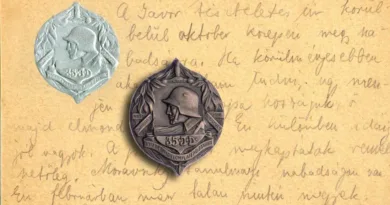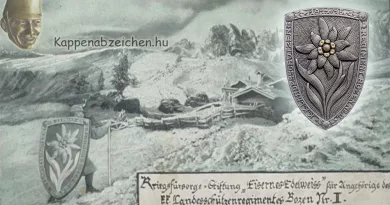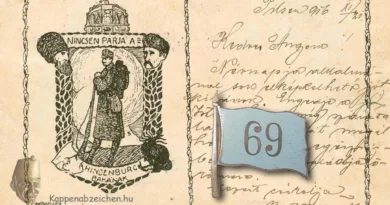IR 34 “Vilmos-bucks”
The crew of some infantry regiments were informally named after the regiment owner’s first name. Thus the name of the 34th Infantry Regiment was called “Vilmos Bucks”. I then after his death II. Wilhelm, the German emperors were the owners of the regiment in the decades before the Great War. The garrison of the regiment was in Kassa during these years, and its area of recruiting was around the city. The regiment was part of the 27th Division. I can only assume that the script “Iron Brigade” on the postcard attached to the post referred to the 53rd Infantry Brigade, which combined the 25th and 34th Infantry Regiments.

I described the first part of the regiment’s war history earlier. Often operating under German command, it was deployed in the Carpathians and in support of the German attack on Warsaw. From the summer of 1915 to the summer of 1916, the regiment was stationed in defensive positions on the banks of the Ikwa River. The relative calm lasted until June 1916. In the Brussilow offensive, Russian troops broke through the front north and south of the Ikwa positions, so the defense line had to be pulled back also in the area between the two. This was done in an orderly, gradual manner from June 15, with relatively small losses. From the end of June, however, the Russian attack, which intended to widen the burglary, also strongly attacked the central part of the front in the new lines. On July 28, the front line was pulled back again, so the regiment retreated again. However, the positions occupied at that time did not change until December 1917. In the summer of 1917, the attack on the Kerensky offensive was successfully repulsed.
In early 1918, the regiment was commanded to serve as garrison crew in Prague. Then in March they moved to the Italian front, the Mt Asalone district. At the time of the great attack of June 1918, the task of the 27th Division was to advance in the Brenta Valley. The division came out of the mountains with heavy losses. However, as the surrounding mountains could not be occupied, they had to retreat to the starting positions in enemy fire. For the rest of the summer, the regiment was stationed around Asiago.

On another field post card attached to the entry, Vilmos bucks are rushing through the snowy landscape to protect the passes of the Carpathians. I’m presenting one of the regiment’s rare cap badges now. This depicts the German emperor, the regiment owner. Originally, this badge could have been a general propaganda badge, the engraved regiment number was later carved on it. But it is not a unique piece, many similarly engraved specimens are known. In addition, I present a “Vilmos buck” letter seal.




